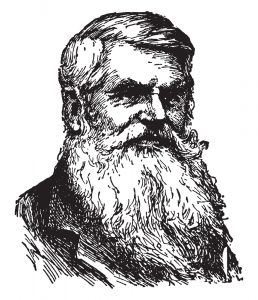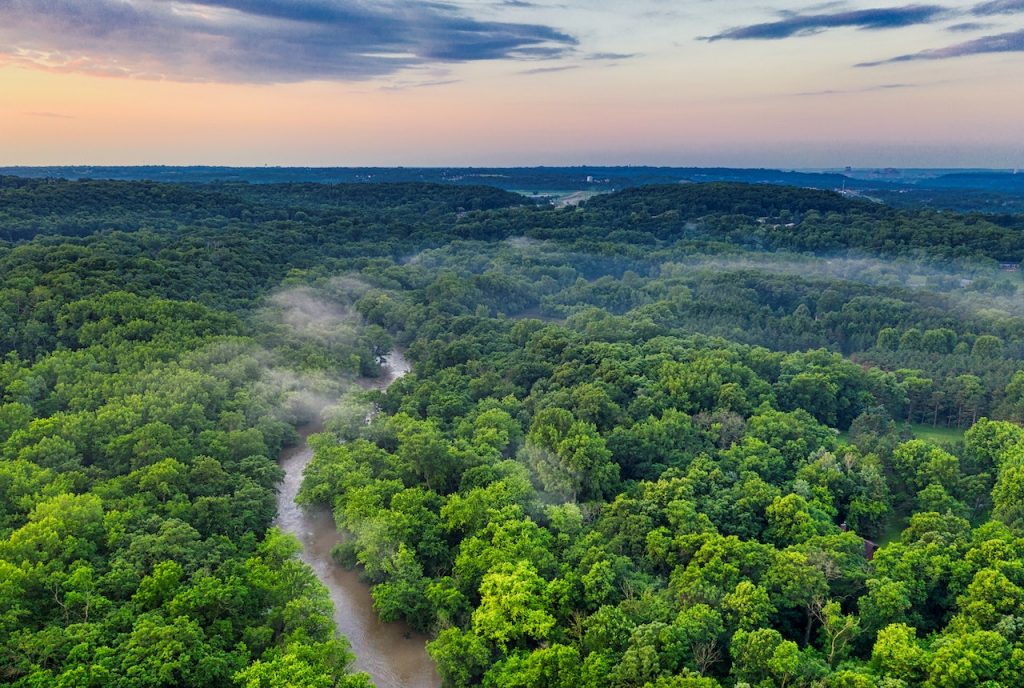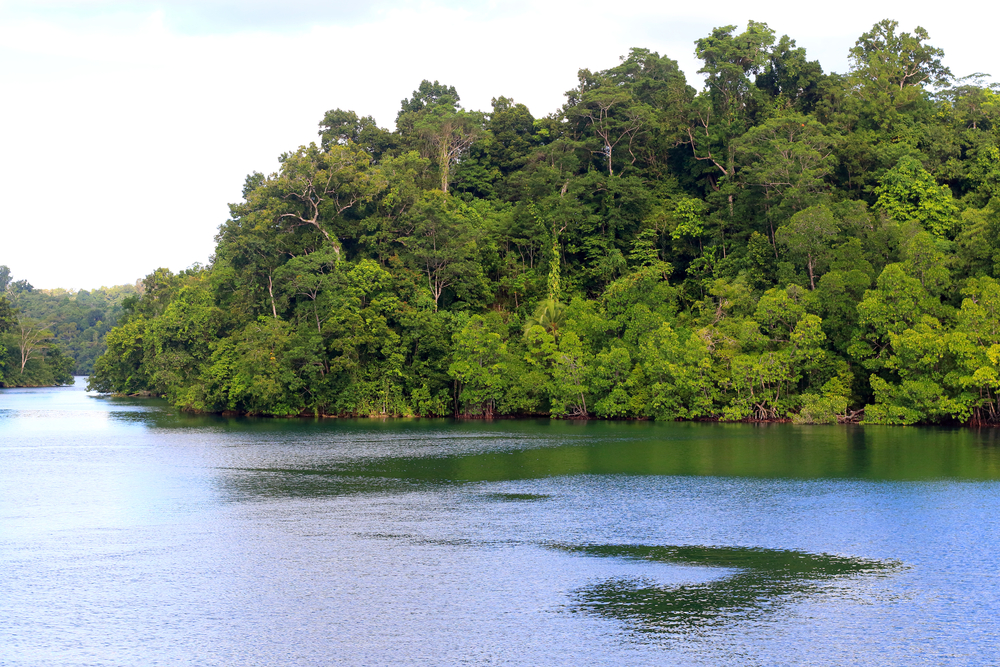When it comes to the theory of evolution, the name Charles Darwin immediately springs to mind. However, there is another brilliant mind that played an equally significant role in shaping our understanding of this groundbreaking concept – Alfred Russel Wallace.
 Alfred Russel Wallace was an intrepid explorer and naturalist who lived in the 19th century. He had a spirit of curiosity, and ventured into the wildest corners of the globe, from the lush jungles of the Amazon to the exotic islands of Southeast Asia. However, what makes his story even more remarkable, is that he independently conceived of the idea of natural selection, which he presented jointly with Charles Darwin.
Alfred Russel Wallace was an intrepid explorer and naturalist who lived in the 19th century. He had a spirit of curiosity, and ventured into the wildest corners of the globe, from the lush jungles of the Amazon to the exotic islands of Southeast Asia. However, what makes his story even more remarkable, is that he independently conceived of the idea of natural selection, which he presented jointly with Charles Darwin.
He was one of the greatest naturalists in history. Yet he has often been overshadowed by his friend and scientific peer – earning him the nickname the forgotten father of evolution. We are here to shine some light on his significant contributions to the field, and right that wrong!
His Early Years
Born on 8 January 1823 to Thomas Vere Wallace and Mary Ann Wallace in Monmouthshire in the UK, Alfred Russel Wallace was the eighth of nine children. As a young man, Wallace worked with his brother John as a surveyor in the countryside of England and Wales.
It is here that his fascination with nature began. He became a keen amateur botanist, often collecting plants and flowers during his work outings in the countryside.
During this time in his life Wallace met the young entomologist, Henry Bates, who introduced him to the fascinating world of insects and who would soon join him on a daring journey to the Amazon.
Wallace’s Voyage to the Amazon
In 1848, the pair of British naturalists embarked on an expedition to the Amazon. Here they would go on to spend four years traversing the treacherous and uncharted territories of the Amazon basin.

Wallace did not possess formal academic credentials when he embarked on this expedition. However, his extensive self-study and practical experience in natural history, combined with his keen observational skills, provided him with a solid foundation of knowledge.
The Collection of Species
During his time in the Amazon, Wallace collected thousands of specimens of plants, animals, insects, and birds. He observed the intricate relationships between species, noting patterns of mimicry, adaptation, and symbiosis. His keen eye and meticulous attention to detail enabled him to document the rich biodiversity of the region and provide valuable insights into the mechanisms of evolution.
Early Theories About Natural Selection
Wallace’s observations in the Amazon rainforest played a pivotal role in shaping his ideas about the natural history of selection and the origins of species. Witnessing firsthand the immense diversity of life and the intricate web of interdependencies of closely allied species, he began to question the widely accepted belief that species are unchanging and do not evolve over time. Instead, he saw evidence of species evolving and adapting to their environment, driven by the forces of natural selection.
Tragedy at Sea
Wallace’s time in the Amazon was not without its trials and tribulations. In 1852, tragedy struck when his ship caught fire on the return journey to England. Wallace lost almost all of his animal specimens and notes, painstakingly gathered over four years of arduous exploration. This devastating loss of the specimens Wallace collected could have crushed the spirits of a lesser scientist, but Wallace’s determination and resilience prevailed. He continued to persevere and draw upon his remaining knowledge and memories to shape his theories on evolution and biogeography.
The Amazon’s Impact on Wallace
Wallace’s voyage to the Amazon laid the foundation for his groundbreaking contributions to science. His first-hand observations of the remarkable biodiversity and intricate ecological relationships in the rainforest provided him with invaluable evidence to support his later ideas on natural selection and the origin of species.
The Malay Archipelago and the Wallace Line
After he voyaged the Amazon, Alfred Russel Wallace embarked on another monumental journey, this time to the Malay Archipelago. Spanning thousands of islands between Southeast Asia and Australia, this region held an immense allure for naturalists and explorers, with its diverse ecosystems and unique species.

Wallace’s exploration of the Malay Archipelago began in 1854 and lasted for eight years, during which he meticulously documented the flora, fauna, and indigenous cultures of the region. His observations would prove pivotal in shaping his understanding of evolution and biogeography.
What is the Wallace Line?
While exploring the Malay Archipelago, Wallace noticed a remarkable distinction in the species geographical distribution of animals between the western islands, such as Bali and Lombok, and the eastern islands, including Sulawesi and New Guinea. He observed that the animal species in the western islands closely resembled those found in Asia, while the eastern islands had a distinctly Australian character.
Wallace believed that this stark difference in species composition was not merely a coincidence but a result of a barrier that separated the two regions. He proposed that there was a biogeographic boundary, now known as the Wallace Line, which marked the transition zone between the Asian and Australian fauna. This boundary indicated a historical connection between the two regions that had been disrupted by geological events and rising sea levels.
The Significance of the Wallace Line
The discovery of Wallace’s Line was a groundbreaking revelation in the field of biogeography. It provided compelling evidence for the concept of geographical isolation as a driving force in speciation. Wallace recognized that the separation of landmasses, such as islands, by natural barriers could lead to the divergence and evolution of distinct species.
The presence of unique and endemic species on either side of the Wallace Line highlighted the influence of geographical isolation on the diversification of life. It also demonstrated the role of migration and colonization in shaping the distribution patterns of organisms. This concept further bolstered the theory of evolution and the understanding that species evolve through the process of natural selection in response to their specific environments.
Contributions to the Theory of Evolution and Natural History
Alfred Russel Wallace’s contributions to the theory of evolution are profound and wide-ranging. His independent formulation of the concept of natural selection, along with his extensive fieldwork and observations, provided compelling evidence and insights that expanded our understanding of evolution.
Wallace’s Concept of Natural Selection
In 1858, Wallace sent a letter to Charles Darwin outlining his ideas on natural selection, coinciding with Darwin’s work. Recognizing the significance of Wallace’s ideas, their letters were presented together, acknowledging both as co-discoverers of natural selection.
Fieldwork and Observations
Wallace’s fieldwork in the Amazon and the Malay Archipelago provided empirical evidence supporting evolution. His observations of mimicry, adaptive radiation, and sexual selection shed light on the mechanisms driving evolutionary change.
Advancing the Theory of Evolution
Beyond fieldwork, Wallace explored additional topics, speculating on the role of environmental changes and spiritual forces in evolution. Wallace’s contributions solidified the foundations of evolutionary theory and his legacy endures as a key figure in the advancement of our understanding of life’s diversity and origins.
On a personal note, Wallace was a vocal critic of the exploitation of native populations in the territories he explored. He condemned the mistreatment and abuses inflicted on indigenous communities by colonial powers and advocated for their rights and fair treatment.
Alfred Wallace and Charles Darwin
While Charles Darwin is undeniably the face of evolutionary theory, his relationship with Alfred Wallace was one of deep friendship and mutual respect. The two men corresponded regularly for over 30 years, engaging in robust intellectual discussions and sharing their groundbreaking insights.
In Defence of Darwin
Wallace ardently defended Darwin’s work, supporting the publication of “On the Origin of Species” and championing the theory of natural selection. He recognized the profound significance of Darwin’s ideas and their transformative impact on the scientific world. In 1889, Wallace published “Darwinism”, a book Wallace wrote to clarify and promote Darwin’s ideas.
Despite some differences in their views, they maintained a respectful and collaborative relationship.
Differences Between Wallace and Darwin
While Wallace and Darwin shared many core beliefs, they did diverge on certain aspects of evolutionary theory.
One of which was natural selection. Wallace emphasised the role of environmental pressures as the primary factor, suggesting that organisms adapt to their surroundings to increase their chances of survival. On the other hand, Darwin emphasised competition within species as the key driver, with variations that provide a competitive advantage being naturally selected.
Another difference was their interpretations of sexual selection, with Wallace attributing the evolution of certain traits to mate choice, while Darwin also emphasised intrasexual competition. As a spiritualist, Wallace believed, suggesting that higher powers might have influenced evolution. In contrast, Darwin became more agnostic and questioned religious explanations.
Living in Darwin’s Shadow
Unfortunately, Wallace’s intellectual achievements often lived in the shadow of Darwin’s towering reputation. Despite his pivotal role in the development of evolutionary theory, Wallace’s name was not as widely recognized as Darwin’s during his lifetime.
The circumstances surrounding the presentation of their ideas and the subsequent prominence of Darwin’s work contributed to this disparity. Nevertheless, modern scholarship has increasingly acknowledged Wallace’s significant contributions, ensuring that his legacy endures.
His remarkable expeditions, keen observations, and groundbreaking ideas have left an indelible mark on our understanding of the natural world. Today, his story serves as an inspiration, reminding us of the power of curiosity, perseverance, and the ability of an individual to shape scientific knowledge for generations to come.

















